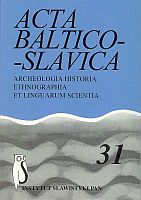Problematyka lingwistyczna w badaniach nad pograniczami
Linguistic issues in research on borderlands
Author(s): Helena KrasowskaSubject(s): Language and Literature Studies
Published by: Instytut Slawistyki Polskiej Akademii Nauk
Keywords: Bukowina; borderlands; language contacts; sociolinguistics; multiculturalism
Summary/Abstract: The author in her article reflexes on the borderland theory according to theories set forth by specialists in various fields, among others A. Kłoskowska, S. Dubisz. Two types of borderlands are presented in the further part of the article: Slavic – Slavic, i.e. Ukrainian-Polish and Polish-Ukrainian, and Slavic – Non-Slavic, i.e. Ukrainian-Romanian. These borderlands share a number of features, e.g. the incidence of language interference resulting from the language contact. The linguistic research of both borderlands pose serious difficulties. Particular emphasis is put on the fact that in the past the area of Bukowina witnessed also language contacts of the following kinds: Ukrainian-German, Ukrainian-Polish, as well as Slovakian-Ukrainian or Slovakian-Romanian. Concerning the cultural borderland, the characteristic features of Bukowina are: lack of dominant culture; economic character of migration; the foundation of new localities of national character. In addition to the research of language borderland it would be desired for the dialectology to include the issues of cultural research, ethnology and, in particular, sociolinguistics. The author points out that research of such kind is already being conducted in Poland by renowned specialists.
Journal: Acta Baltico Slavica
- Issue Year: 2007
- Issue No: 31
- Page Range: 135-139
- Page Count: 5
- Language: Polish

